Gar are living fossils that have remained virtually unchanged for over 100 million years. If you ever have the opportunity to handle a gar, you will quickly understand why they have stood the test of time. These armored fish have a hard, bony head full of sharp teeth and a gas bladder that allows them to breathe in waters with low oxygen content.
While gars are certainly a wonder of nature, their formidable defenses can pose quite a challenge when preparing them for the table. In particular, their armor-like scales require special attention. Filleting a gar is not for the faint of heart or ill-equipped. You’ll need heavy-duty scissors, tin snips, or even a saw to penetrate their tough outer shell. I’ve read stories of people using axes, hatchets, and even chainsaws to work on the scales of a Gar. Personally, I haven’t had to use gardening or lawn care tools, but with a particularly large gar, such as an alligator, I can definitely see the need for it.
However, once you get to their tough look, gars are surprisingly easy to clean. Here are step-by-step instructions for how to fillet a gar:
HOW TO FILLET GAR:
Step 1: Gar tend to be very slimy, especially if they’ve been on the ice for a while. Therefore, you should start by spraying them with water and wiping them thoroughly, which will make handling them much easier.
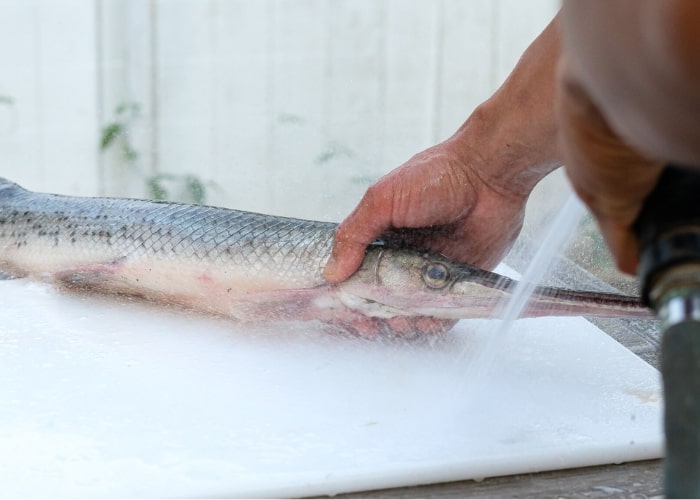
Step 2: Use a sturdy blade to make a small horizontal incision right behind the head, perpendicular to the spine. The goal here is to make an incision that is just large enough to fit your cut or scissors. Continue cutting the pectoral fins using scissors or heavy-duty tin snips.
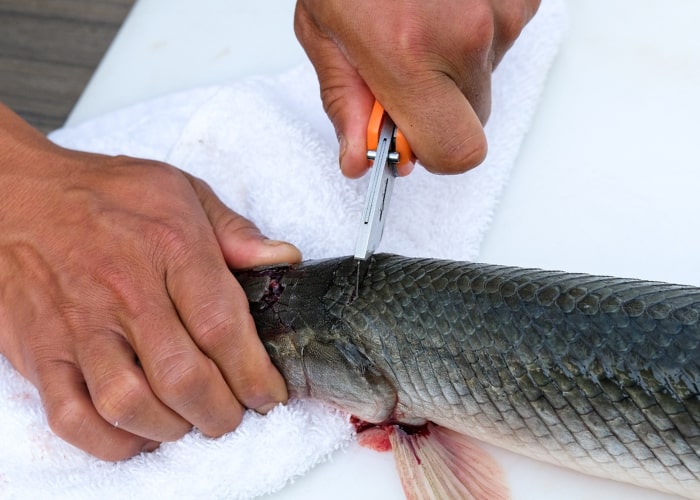
Step 3: Next, cut along the spine, down to the tail.
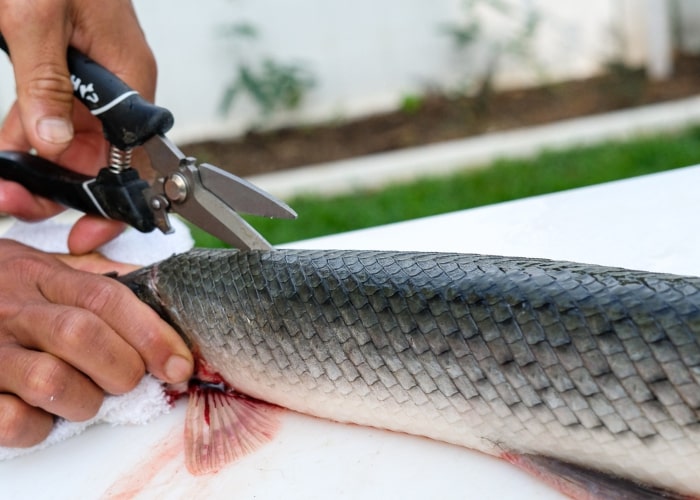
Step 4: Use a fillet knife to stab along the skin to separate the meat. The leather will naturally curve toward you, so a flexible knife and an extra pair of hands can be very helpful.
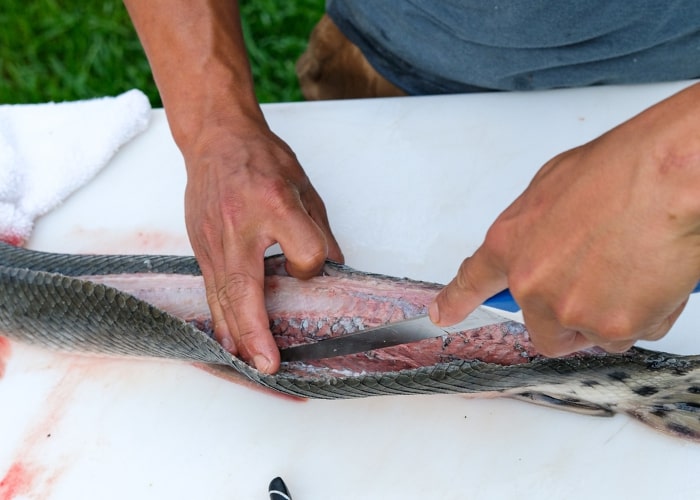
Step 5: Once the skin has separated from the meat, carefully remove the fillets from the backbone and ribs, being careful not to cut through the ribs. It is important to avoid entering the body cavity to prevent any cross-contamination with poisonous eggs. Continue moving the knife toward the tail until you can completely remove the fillet.
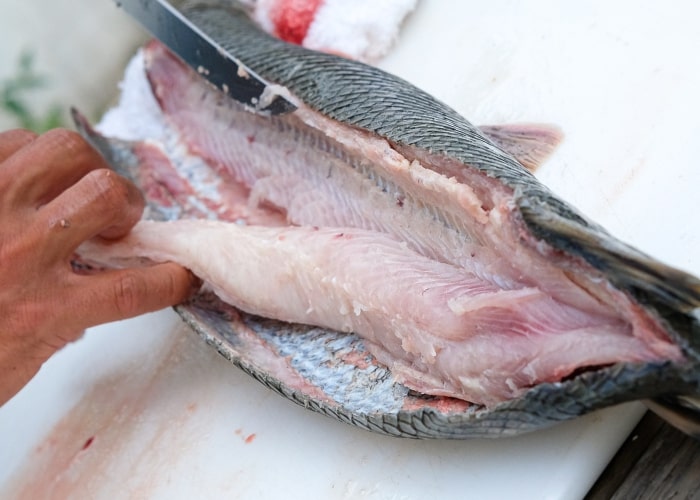
Step 6: Repeat the process on the other side of the fish.
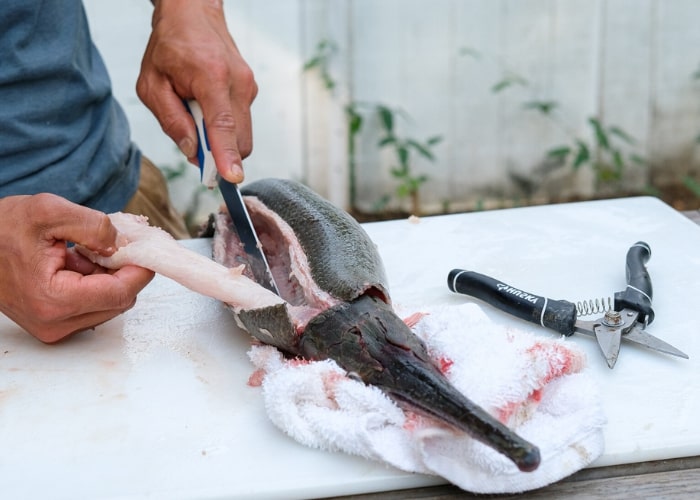
Step 7: Finally, cut the fillets to remove any dark meat and connective tissue, ensuring you have clean, delicious fillets ready to cook.
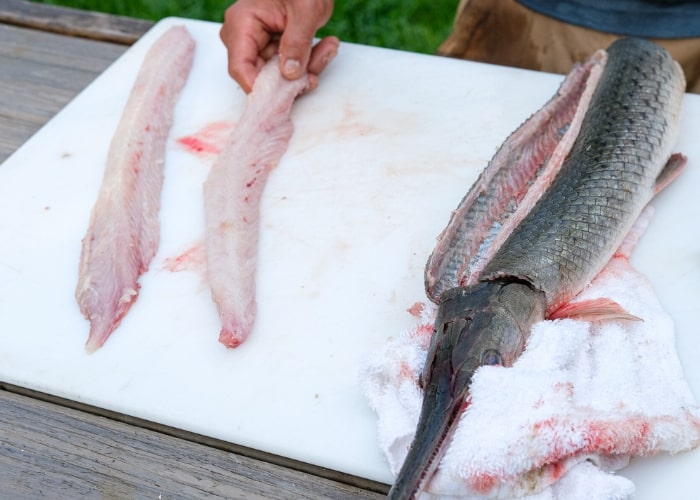
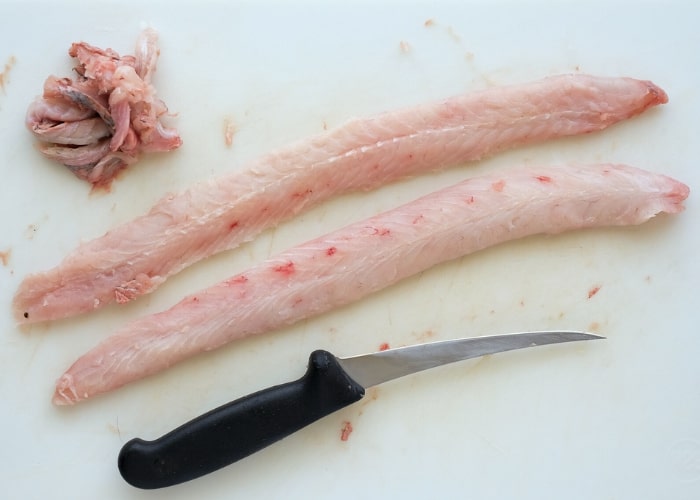
With a little practice and the right tools, filleting a gar can be a rewarding experience, revealing the tender, delicious meat hidden beneath its prehistoric armor. So take up the challenge and enjoy the unique satisfaction of mastering this ancient fish.